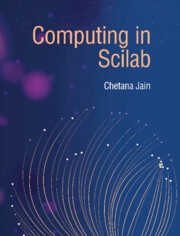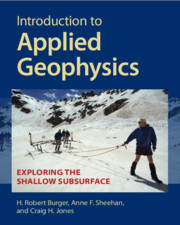Refine search
Actions for selected content:
36846 results in Cambridge Textbooks
References
-
- Book:
- Cognitive Neuroscience
- Published online:
- 15 September 2023
- Print publication:
- 19 October 2023, pp 537-631
-
- Chapter
- Export citation
8 - Axial-Flow Turbines
-
- Book:
- Principles of Turbomachinery in Air-Breathing Engines
- Published online:
- 18 November 2023
- Print publication:
- 19 October 2023, pp 314-411
-
- Chapter
- Export citation
Dedication
-
- Book:
- Cognitive Neuroscience
- Published online:
- 15 September 2023
- Print publication:
- 19 October 2023, pp xx-xx
-
- Chapter
- Export citation
4 - Energy Transfer between a Fluid and a Rotor
-
- Book:
- Principles of Turbomachinery in Air-Breathing Engines
- Published online:
- 18 November 2023
- Print publication:
- 19 October 2023, pp 112-230
-
- Chapter
- Export citation
Appendix A - Math Tools
-
- Book:
- Intermediate Macroeconomics with Chinese Perspectives
- Published online:
- 10 November 2023
- Print publication:
- 19 October 2023, pp 207-210
-
- Chapter
- Export citation
6 - Stabilization Policies
-
- Book:
- Intermediate Macroeconomics with Chinese Perspectives
- Published online:
- 10 November 2023
- Print publication:
- 19 October 2023, pp 181-206
-
- Chapter
- Export citation
10 - Radial-Inflow Turbines
-
- Book:
- Principles of Turbomachinery in Air-Breathing Engines
- Published online:
- 18 November 2023
- Print publication:
- 19 October 2023, pp 467-547
-
- Chapter
- Export citation
Figures
-
- Book:
- Intermediate Macroeconomics with Chinese Perspectives
- Published online:
- 10 November 2023
- Print publication:
- 19 October 2023, pp xi-xiv
-
- Chapter
- Export citation
Chapter 13 - Social Cognition
- from Part II - Neural Bases of Mental Functions
-
- Book:
- Cognitive Neuroscience
- Published online:
- 15 September 2023
- Print publication:
- 19 October 2023, pp 372-398
-
- Chapter
- Export citation
Contents
-
- Book:
- Intermediate Macroeconomics with Chinese Perspectives
- Published online:
- 10 November 2023
- Print publication:
- 19 October 2023, pp v-x
-
- Chapter
- Export citation
6 - Radial Equilibrium Theory
-
- Book:
- Principles of Turbomachinery in Air-Breathing Engines
- Published online:
- 18 November 2023
- Print publication:
- 19 October 2023, pp 269-297
-
- Chapter
- Export citation

Computing in Scilab
-
- Published online:
- 15 October 2023
- Print publication:
- 05 January 2023
-
- Textbook
- Export citation

A Mind for Language
- An Introduction to the Innateness Debate
-
- Published online:
- 13 October 2023
- Print publication:
- 21 September 2023
-
- Textbook
- Export citation

Introduction to Applied Geophysics
- Exploring the Shallow Subsurface
-
- Published online:
- 12 October 2023
- Print publication:
- 12 October 2023
-
- Textbook
- Export citation
Chapter 1 - Approaching the Subsurface
-
- Book:
- Introduction to Applied Geophysics
- Published online:
- 12 October 2023
- Print publication:
- 12 October 2023, pp 1-6
-
- Chapter
- Export citation
6 - Interdependent Arising
- from Part II - Details of the Dhamma
-
- Book:
- An Introduction to Buddhist Philosophy
- Published online:
- 07 October 2023
- Print publication:
- 12 October 2023, pp 104-123
-
- Chapter
- Export citation
5 - Kamma, Samsara, and Rebirth
- from Part II - Details of the Dhamma
-
- Book:
- An Introduction to Buddhist Philosophy
- Published online:
- 07 October 2023
- Print publication:
- 12 October 2023, pp 83-103
-
- Chapter
- Export citation
Part I - A Sketch of the Buddha and the Dhamma
-
- Book:
- An Introduction to Buddhist Philosophy
- Published online:
- 07 October 2023
- Print publication:
- 12 October 2023, pp 1-80
-
- Chapter
- Export citation
Index
-
- Book:
- An Introduction to Buddhist Philosophy
- Published online:
- 07 October 2023
- Print publication:
- 12 October 2023, pp 321-332
-
- Chapter
- Export citation
3 - The Basic Teachings of the Buddha
- from Part I - A Sketch of the Buddha and the Dhamma
-
- Book:
- An Introduction to Buddhist Philosophy
- Published online:
- 07 October 2023
- Print publication:
- 12 October 2023, pp 45-60
-
- Chapter
- Export citation
